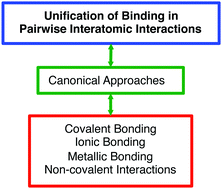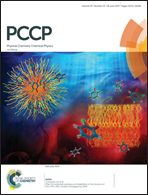Is there any fundamental difference between ionic, covalent, and others types of bond? A canonical perspective on the question
Abstract
The concept of chemical bonding is normally presented and simplified through two models: the covalent bond and the ionic bond. Expansion of the ideal covalent and ionic models leads chemists to the concepts of electronegativity and polarizability, and thus to the classification of polar and non-polar bonds. In addition, the intermolecular interactions are normally viewed as physical phenomena without direct correlation to the chemical bond in any simplistic model. Contrary to these traditional concepts of chemical bonding, recently developed canonical approaches demonstrate a unified perspective on the nature of binding in pairwise interatomic interactions. This new canonical model, which is a force-based approach with a basis in fundamental molecular quantum mechanics, confirms much earlier assertions that in fact there are no fundamental distinctions among covalent bonds, ionic bonds, and intermolecular interactions including the hydrogen bond, the halogen bond, and van der Waals interactions.



 Please wait while we load your content...
Please wait while we load your content...